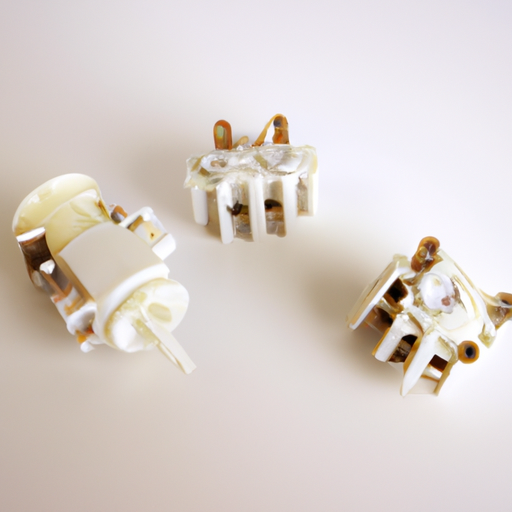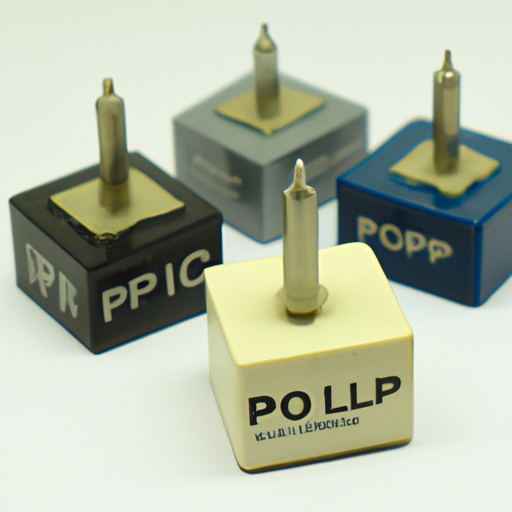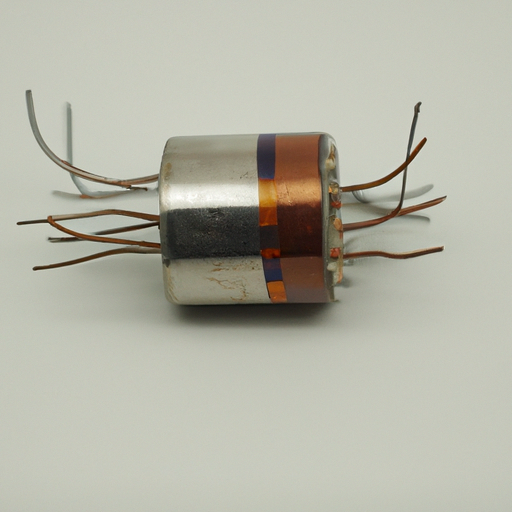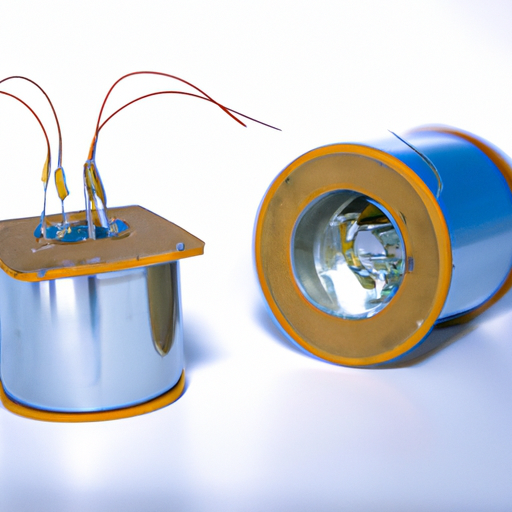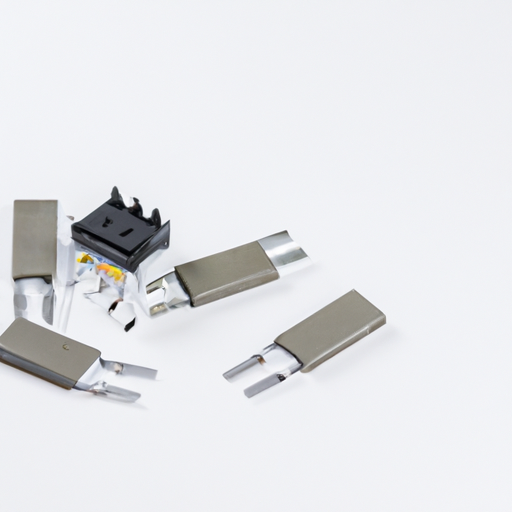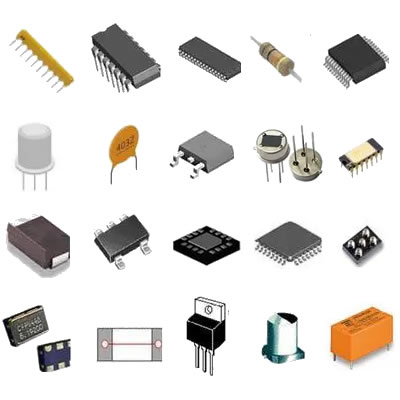What are the types of popular washing machine capacitor products?
What are the Types of Popular Washing Machine Capacitor Products?
Introduction
Washing machines are essential appliances in modern households, making laundry tasks more manageable and efficient. At the heart of their operation lies a crucial component: the capacitor. Understanding the different types of capacitors used in washing machines is vital for anyone involved in maintenance or repair. This article aims to educate readers on the various popular washing machine capacitor products, their functions, and how to choose the right one for your needs.
1. Understanding Capacitors in Washing Machines
1.1 Definition of a Capacitor
A capacitor is an electrical component that stores and releases electrical energy. It consists of two conductive plates separated by an insulating material, known as a dielectric. When voltage is applied, the capacitor charges, storing energy in the electric field between the plates. This stored energy can then be released when needed, making capacitors essential in various electrical circuits.
1.2 Role of Capacitors in Washing Machines
In washing machines, capacitors play a critical role in the operation of the motor. They are responsible for providing the necessary starting torque to the motor, allowing it to begin spinning. Additionally, capacitors help maintain the motor's efficiency during operation, ensuring smooth and effective performance. A well-functioning capacitor can significantly impact the energy efficiency of the washing machine, leading to lower electricity bills and a longer lifespan for the appliance.
2. Types of Capacitors Used in Washing Machines
2.1 Start Capacitors
Start capacitors are designed to provide a boost of energy to the motor during startup. They are typically used in single-phase induction motors, which are common in washing machines. Start capacitors have a high capacitance value, allowing them to deliver a significant amount of energy quickly. Once the motor reaches a certain speed, the start capacitor is disconnected from the circuit.
**Characteristics and Specifications:**
- High capacitance value (usually between 70-100 µF)
- Short-term use (only during startup)
- Typically cylindrical in shape
**Common Brands and Models:**
- GE Start Capacitor
- Supco SPP6 Start Capacitor
- Mars 12630 Start Capacitor
2.2 Run Capacitors
Run capacitors are used to improve the efficiency of the motor during its operation. Unlike start capacitors, which are only active during startup, run capacitors remain in the circuit while the motor is running. They help maintain a consistent voltage and improve the motor's performance.
**Differences Between Start and Run Capacitors:**
- Start capacitors are used temporarily, while run capacitors are used continuously.
- Run capacitors have a lower capacitance value (typically between 1-50 µF).
**Common Brands and Models:**
- Dayton Run Capacitor
- A.O. Smith Run Capacitor
- Grainger Run Capacitor
2.3 Dual Run Capacitors
Dual run capacitors combine the functions of both start and run capacitors into a single unit. They are designed for motors that require both starting and running assistance. Dual run capacitors are commonly found in washing machines and other appliances that use single-phase motors.
**Applications in Washing Machines:**
- Provide both starting torque and running efficiency
- Compact design saves space in the appliance
**Popular Products and Brands:**
- Supco Dual Run Capacitor
- Mars 12635 Dual Run Capacitor
- GE Dual Run Capacitor
2.4 Motor Start Capacitors
Motor start capacitors are specifically designed for starting electric motors. They provide a high starting torque, allowing the motor to overcome inertia and begin spinning. These capacitors are essential for washing machines, as they ensure the motor starts efficiently.
**Key Features and Specifications:**
- High capacitance value (typically between 100-300 µF)
- Designed for short-term use during startup
- Often cylindrical or oval in shape
**Examples of Popular Products:**
- A.O. Smith Motor Start Capacitor
- GE Motor Start Capacitor
- Supco SPP8 Motor Start Capacitor
3. Popular Brands and Products
3.1 Overview of Leading Brands
Several manufacturers are known for producing high-quality washing machine capacitors. These brands are recognized for their reliability, performance, and positive customer reviews. Some of the leading brands include:
Supco: Known for a wide range of HVAC and appliance parts, including capacitors.
Mars: Offers a variety of electrical components, including capacitors for washing machines.
GE: A well-established brand in the appliance industry, known for durable and efficient components.
3.2 Product Reviews
Brand A: Supco
Features: Offers a range of start and run capacitors with high capacitance values.
Pros: Reliable performance, widely available, and good customer support.
Cons: Some users report issues with longevity.
Brand B: Mars
Features: Known for dual run capacitors that combine both starting and running functions.
Pros: Compact design, efficient performance, and good build quality.
Cons: Slightly higher price point compared to competitors.
Brand C: GE
Features: Offers a variety of capacitors for different washing machine models.
Pros: Trusted brand with a long history, high-quality components.
Cons: Limited availability in some regions.
4. How to Choose the Right Capacitor
4.1 Factors to Consider
When selecting a washing machine capacitor, several factors should be taken into account:
Voltage Rating: Ensure the capacitor's voltage rating matches the washing machine's specifications.
Capacitance Value: Choose a capacitor with the appropriate capacitance value for your specific motor.
Physical Size and Compatibility: Verify that the capacitor fits within the designated space in the washing machine.
Brand Reputation and Warranty: Opt for reputable brands that offer warranties for added peace of mind.
4.2 Common Mistakes to Avoid
Choosing the Wrong Type of Capacitor: Ensure you select the correct type (start, run, or dual) based on your washing machine's requirements.
Ignoring Specifications: Always check the voltage and capacitance specifications to avoid compatibility issues.
Overlooking Installation Requirements: Be aware of the installation process and any specific requirements for your washing machine model.
5. Installation and Maintenance Tips
5.1 Safety Precautions
Handling capacitors can be dangerous due to the risk of electric shock. Always take the following safety precautions:
Disconnect Power: Ensure the washing machine is unplugged before attempting any repairs.
Use Protective Gear: Wear insulated gloves and safety goggles to protect yourself during installation.
5.2 Installation Process
Replacing a washing machine capacitor can be done with the following steps:
1. **Gather Tools:** You will need a screwdriver, multimeter, and the replacement capacitor.
2. **Access the Capacitor:** Remove the washing machine's outer casing to access the motor and capacitor.
3. **Disconnect the Old Capacitor:** Carefully note the wiring connections and disconnect the old capacitor.
4. **Install the New Capacitor:** Connect the new capacitor according to the wiring diagram, ensuring a secure fit.
5. **Reassemble the Machine:** Replace the outer casing and plug the machine back in.
5.3 Maintenance Tips
To prolong the life of your washing machine capacitor, consider the following maintenance tips:
Regular Checks: Periodically inspect the capacitor for signs of wear or damage.
Signs of Failure: Be aware of symptoms such as unusual noises, motor failure to start, or erratic operation.
Best Practices: Keep the washing machine clean and free from moisture to prevent capacitor damage.
6. Conclusion
Capacitors are vital components in washing machines, playing a crucial role in motor operation and overall efficiency. Understanding the different types of capacitors, such as start, run, dual run, and motor start capacitors, can help you make informed decisions when it comes to maintenance and repairs. By choosing the right products from reputable brands and following proper installation and maintenance practices, you can ensure your washing machine operates smoothly for years to come.
7. Additional Resources
For further reading on washing machine maintenance, consider the following resources:
- [Washing Machine Maintenance Tips](#)
- [Professional Repair Services](#)
- [FAQs about Washing Machine Capacitors](#)
By staying informed and proactive, you can keep your washing machine in optimal condition and avoid costly repairs down the line.

